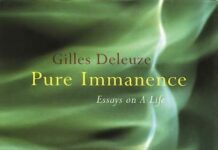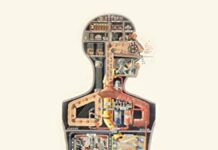
Ebook Info
- Published: 1990
- Number of pages: 393 pages
- Format: PDF
- File Size: 53.40 MB
- Authors: Gilles Deleuze
Description
Considered one of the most important works of one of France’s foremost philosophers, and long-awaited in English, The Logic of Sense begins with an extended exegesis of Lewis Carroll’s Alice in Wonderland. Considering stoicism, language, games, sexuality, schizophrenia, and literature, Deleuze determines the status of meaning and meaninglessness, and seeks the ‘place’ where sense and nonsense collide.Written in an innovative form and witty style, The Logic of Sense is an essay in literary and psychoanalytic theory as well as philosophy, and helps to illuminate such works as Anti-Oedipus.
User’s Reviews
Editorial Reviews: Review Perhaps one day, this century will be known as Deleuzian. — Michel Foucault From the Back Cover This book begins with an extended exegesis of Lewis Carroll’s Alice in Wonderland. Considering stoicism, language, games, sexuality, schizophrenia, and literature, Deleuze determines the status of meaning and meaninglessness, and seeks the ‘place’ where sense and nonsense collide. About the Author Gilles Deleuze was Professor of Philosophy at the Universite de Paris VIII, Vincennes-St. Denis, until his retirement in 1987. His books includeNietzsche and Philosophy,Anti-Oedipus: Capitalism and Schizophrenia, andDifference and Repetition.Constantin V. Boundas is Associate Professor of Philosophy at Trent University in Ontario. He has translated Deleuze’sEmpiricism and Subjectivity and editedThe Deleuze Reader, both for Columbia University Press. Read more
Reviews from Amazon users which were colected at the time this book was published on the website:
⭐in 1994, we were introduced to Deleuze’s “difference and repetition”, which gave us his basic system of thought and concluded with a hint of divulging his epistemology. Our positing of difference in the “Spatium” was to follow an epistemology of the triad of”bodies – sense – event”, which led to the manifestation of the incorporeal. This earlier volume from Columbia univ. press gives us the epistemology in detail. He concentrates on the 3rd moment of “event” and the “logic of sense”, as the title announces. He presents an extremely detailed account of : manifestation of the singularity along the line of “past-future” on the surface of external bodies; next , signification as the”ideal-game”, for which he lists “8” aspects. Then 3rd, he articulates abstraction along the “border-of-sense”, as that creative frontier where our “rebel-element” emerges that stretches the present. Finally he addresses what many might miss: an actual doctrine of Hegel’s “counter-blow”. He calls it keeping concepts “liquid” and preventing them from the rigidity that is imposed by the “schizophrenic -self”. This liquidity is presented as a triad of: word-passion / word-action / word-aesthetic (my rendition for this 3rd moment). The amount of information here is staggering. He is tough to completely assimilate. But take your time; conquer questions immediately before moving on. I did this with his 1994 book; and then this one was much more accessible. Deleuze offers real transcendence for post-moderns; but it is a “produced” transcendence. After completing this volume you should have a firm grasp on his thought. 5 stars of course.
⭐The Logic of Sense (LOS) cries out to be interpreted from the end to the beginning, since the Thirty-Fourth Series is the culmination of all the previous Thirty-Three.Therefore to summarize the meaning of the Event, best accompanied by humor rather than by irony or satire, is to express how the resonance of original Depth (Freudian Id) of the body and mouth, first by Eros (libidinized) and then by Thanatos (desexualized), become projected onto the shining metaphysical surface via sublimation, thinking and language, into the expressed, the Result. The created is the result of the creating and vice versa. Also “series” represents his concept of difference which is founded on multiplicity (series of more than one) as Univocity of Being, versus the Same or oneness which would yield the Equivocity of Being. It takes the first part of the book to catch up with this finale.Logic of Sense came shortly after Difference and Repetition (DR), and the difference is remarkable. While DR is much more of an attempt to express concepts, LOS takes on the limits of the ability to express sense, using paradox and Lewis Carroll’s fantasy use of language to express his philosophy of difference. It is very demanding of the reader and it helps to have supportive secondary sources such as James Williams’
⭐–(read this one first), and Sean Bowden’s
⭐.
⭐Exactly as described
⭐Nice!
⭐Some of Deleuze’s very best work but not up to Whitehead./
⭐This book rates five stars for what it ought to have been had it been translated competently. (It gets one star for the translative mutilation.)What makes Logic of Sense such an amazing discourse? It is certainly not the “confrontation with Lacanian analysis” mentioned by one reviewer — there is no such confrontation here, only with Kleinian analysis and with some of Lacan’s early disciples. Anti-Oedipus would have been the real confrontation, except that with A-O the misunderstandings begin to multiply uncontrollably. And it is a more powerful work by far than LS, on a hole Other level, it just can’t handle its own forces or hold its horses . . .What is so great about LS is rather exactly what it says in the title, its Logic of Sense. Deleuze got very frustrated with logic such as it developed in the schools of Wittgenstein and Frege-Russell-Quine; but here he is in full initiatory postdoctoral fervor, and is able to find what is powerful in Frege’s distinction between Sinn and Bedeutung and run with it, in fact using the linguistics of Saussure and Benveniste to invent his own Idea of sense: a sense whose Other side is the event with which it is connected and in which it continues otherwise.This is the only real connection to Lacan in the book, and it is a fine borrowing and reinvention on Deleuze’s part: the Moebius band. Does the Thing have two sides or one side? Neither, or both. Deleuze realized that the event itself does not exist until it begins to make sense of itself (as “subject”, Badiou would say); making sense is itself an event, THE event. (Deleuze never lost hold of this insight: it is still there in What Is Philosophy?)The reason I call it the Thing is that the Moebius topology of the phantasm (another name of sense) did “originate” (so to speak) out of Lacan’s seminar on the Thing (The Ethics of Psychoanalysis, where the M-b is not yet introduced). What the topology of the projective plane (of which the M-b is a cutting) enables is an aesthetic intuition of that Thing, that Surface that has neither interior nor exterior (“extime”): call it the human essence (as Spinoza did): desire.The topology of desire can be approached intuitively, aesthetically, conceptually by construction of the projective plane — which can also become part of a practice of cure (of the sick gaze of manic-melancholy passion, delusional anticipation and mourning . . .) by way of object-making. On that (the partial cure by making things) Deleuze and Lacan will always remain in agreement. Beyond that, Deleuze never followed Lacan into knot theory and practice, the conceptual-aesthetic-ethical construction of triadic relation . . . (But at the end of Cinema I we see Deleuze constructing his own version of symbolic-triadic out of Peirce, where Lacan too found it).How to read LS in the context of Deleuze’s own evolution? That theory of surface, phantasm, sense . . . was never abandoned by Deleuze; and yet you can see how the abyss, the Hole (Artaud, Nietzsche) he never practiced topologically WITH Lacan, already threatens to break up the surface and swallow the psyche. Deleuze does not seem to have grasped at this point (1969) that the 3 or 4 dimensional topology of the Body (locus of the Other as Lacan clarified in 1967) could be not just surveyed superficially (where holes appear as disappearances), but explored “in depth” — not at all by multiplying Cartesian-Riemannian dimensions, but in changing relations, inventing a new DIT-MENTION of relation (triadic, Borromean) nearly adequate to handle Language that touches and penetrates the listening body. (It takes 4, adding the symptom, to achieve the topology of enunciation.)Should we then blame Guattari for misleading Deleuze away from and against Lacan? That would be a facile procedure but gratuitous, since obviously the encounter with Guattari was as close as Deleuze was able to come to Lacan — and for good reason! Look at the groups of hysterics and perverts surrounding Lacan! Look at the magisterial son-in-law! Alas, regard Lacan himself, in his public persona (personality, as he said , is “paranoid psychosis”): the Master who cannot tolerate dissent . . . But is that really true of Lacan, the analyst, who invented the Cartel as topological research group? Whose seminar was actually not structurally that of the Master discourse but that of the Teacher (which is entirely different, it is the discourse of a “cured hysteric”)? Whose private analytic practice never ceased to produce new ideas and techniques, which Lacan always credited (as Freud did) to the analysants?One could only be thankful, then, for Deleuze’s creative separation, if only that connection with Lacanian topology had not been prematurely broken. As to a “confrontation with Lacan”, it never took place — except precisely in that it became a confrontation . . . between shadows.
⭐As there is no review for this book yet, I thought I’d write a short one, just outlining the main ideas and layout of the book. This books draws heavily on Lewis Carroll’s works on Alice (of Wonderland fame) and Carroll’s playful and intelligent use of nonsense, linking it with Stoic philosophy. As is mentioned in the product description, Deleuze also tackles schizophrenia and psychoanalysis in his explanation of the logic of Sense. It is divided into chapters which are called “series” and generally they around two to four pages long each, dealing with particular issues in each (for example, chapter one introduces the notion of “pure becoming” – a paradox which is explained by Alice’s ‘becoming larger, and becoming smaller’ at the same time). An appendix deals with Simulacra and other ideas. The cover of the book features everybody’s favourite Queen of Hearts, amongst other cards, and looks really good. Overall, this Continuum edition is a decent copy of a good book by a remarkable author. Worth buying.
⭐It’s a must read for lovers of Alice in Wonderland – Deleuze at his stimulating bestshort relatively readable segments
⭐It’s great. Deleuze considers the Stoics. In contrast, the reading of 20th century psychology toward the end of the book suggests an amusing and defunct historical artefact.
Keywords
Free Download The Logic of Sense in PDF format
The Logic of Sense PDF Free Download
Download The Logic of Sense 1990 PDF Free
The Logic of Sense 1990 PDF Free Download
Download The Logic of Sense PDF
Free Download Ebook The Logic of Sense





